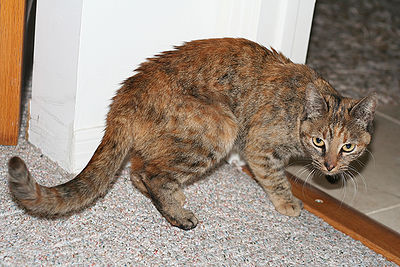Related Articles
Why Cats Lick
If you’ve ever been licked by a cat, you’ve experienced the roughness of the tongue, almost like sandpaper. A cat’s tongue is covered with barbs called papillae that face backwards and cause the rough sensation. The barbs are made of seratin, a substance found in human fingernails. The barbs serve a number of purposes. Cats […]
Fibrocartilagenous Embolism
Fibrocartilagenous Embolish (FCE) or Spinal Cord Stroke occurs very suddenly. Small particles of the spinal disk (fibrocartilage) between the bones of the spine (vertebrae) block the blood vessels in the spine. FCE usually affects young or middle-aged dogs, medium to large breeds, but can occur in any dog. It rarely happens in cats or horses. […]
New Test for Lyme Disease in Horses
2013 Detecting Lyme disease in horses has been difficult since many horses don’t show symptoms until months after being infected. But in 2012, researchers at Cornell University’s Veterinary School developed a test which can detect antibodies as early as 2-4 weeks after the horse has been infected. The test also indicates the stage of Lyme […]



